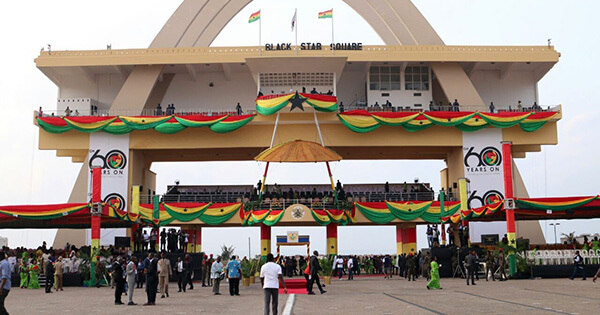African Grey Parrot may go extinct in Ghana
- African Grey Parrot photo courtesy of Reto Kuster
In the last two decades Ghana has lost 90-99% of its African Grey Parrot (Psittacus erithacus) population. This is according to a recently published study by a team of researchers from Ghana and the United Kingdom associated to Manchester Metropolitan University and BirdLife International.
The population decline of the Grey Parrot, a heavily traded bird species, is evidenced by among others, the near-total loss of the major roosts known in 1992. Further evidence indicates an almost a ten-fold reduction in bird encounter rates observed in the 1990s compared to 2014, as well as the perceptions of 96% of the almost a thousand residents that were interviewed during the study.
“Dedicated searching, including visits to roosts which previously had as many as 1,200 individuals 20 years ago, yielded just a handful of Grey Parrot sightings”, said Nathaniel Annorbah, a Ghanaian graduate student of the Manchester Metropolitan University, and the lead author of the scientific paper published in Ibis, an international journal of avian science.
“Grey Parrot populations in Ghana have declined catastrophically and the species is now very rare across the country”, added Dr Nigel Collar from BirdLife International.
The authors of the paper ‘Trade and habitat change virtually eliminate the Grey Parrot Psittacus erithacus from Ghana’, attributes the population decline to four main factors: trade, overall forest reduction, silvicultural practices and farmland timber harvesting.
“Illegal trade must surely have contributed to the post-1990 declines that we report. This is affirmed by the fact that in the years 1991–2012 when trade was outlawed and Ghana’s reported exports of Grey Parrots totaled just 35 individuals, the population in the country still declined by 95%”, emphasized Dr Stuart Marsden from Manchester Metropolitan University.
“After a successful campaign to ban the trade in Grey Parrots lead by the Wildlife clubs of Ghana, the junior wing of Ghana Wildlife society, this comes as a great disappointment”, observes Mr Japheth Roberts of Ghana Wildlife society (GWS, BirdLife Partner in Ghana). “However, it shows us that there are challenges associated with sustaining conservation action and impact over the long term. Having achieved success before, this is the time for GWS and its partners to hit the ground running to arrest and reverse the catastrophic collapse of Grey parrots in Ghana”, he adds.
The situation for Grey Parrots is not only grim in Ghana, but in most of the West Africa region. “Lack of evidence from this and other studies that any Grey Parrot populations in the West Africa region are healthy, suggest that trade in the species must surely be ruled out in the region”, observes Kariuki Ndang’ang’a, the BirdLife Africa Team Leader for Species Science.
In fact the authors question whether in deed there should be any further trade in much of mainland Central Africa as well. The IUCN Red List classification of both Grey Parrots, and especially the much smaller-ranged Timneh Parrot (Psittacus timneh) clearly requires re-evaluating.
In 2013/14, the Africa Secretariat of BirdLife International and CITES supported stakeholders in Liberia, Sierra Leone, Democratic Republic of Congo and Côte d’Ivoire to draft national management plans for the Grey Parrot, as well as update an existing one for Cameroon. These management plans including methods for monitoring populations and trade in the species, must be implemented without delays.
Source: BirdLife.org
Oral Ofori is Founder and Publisher at www.TheAfricanDream.net, a digital storyteller and producer, and also an information and research consultant.





